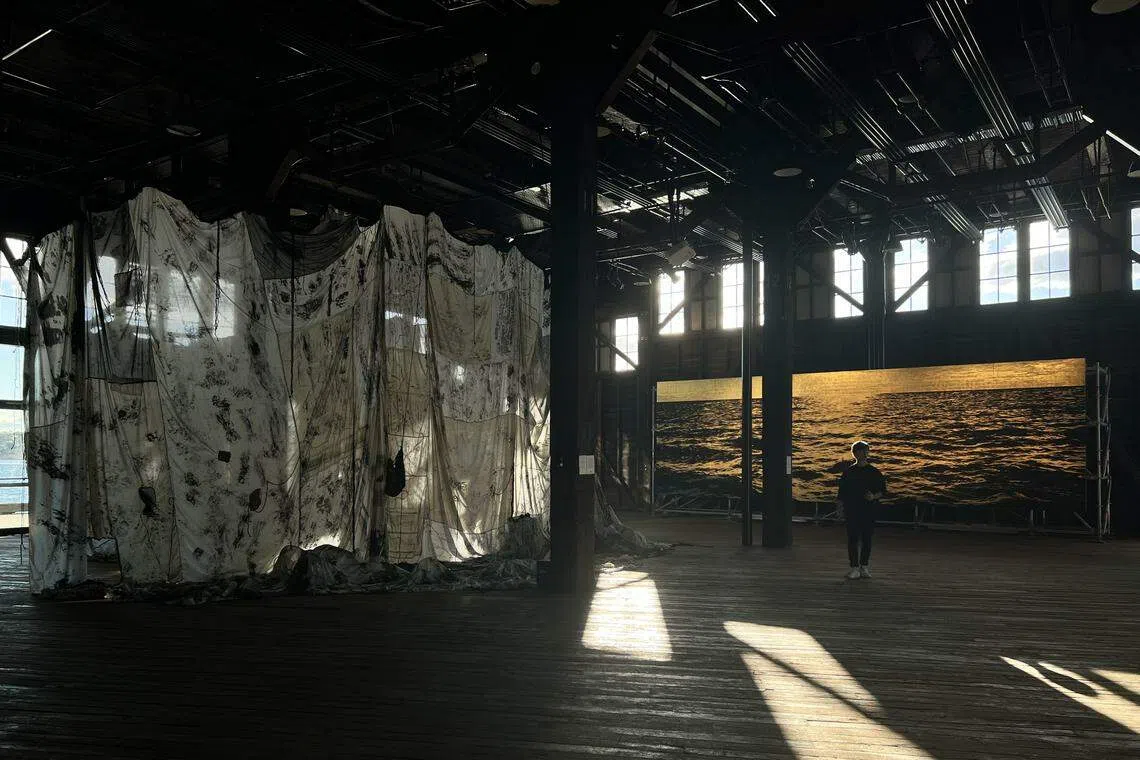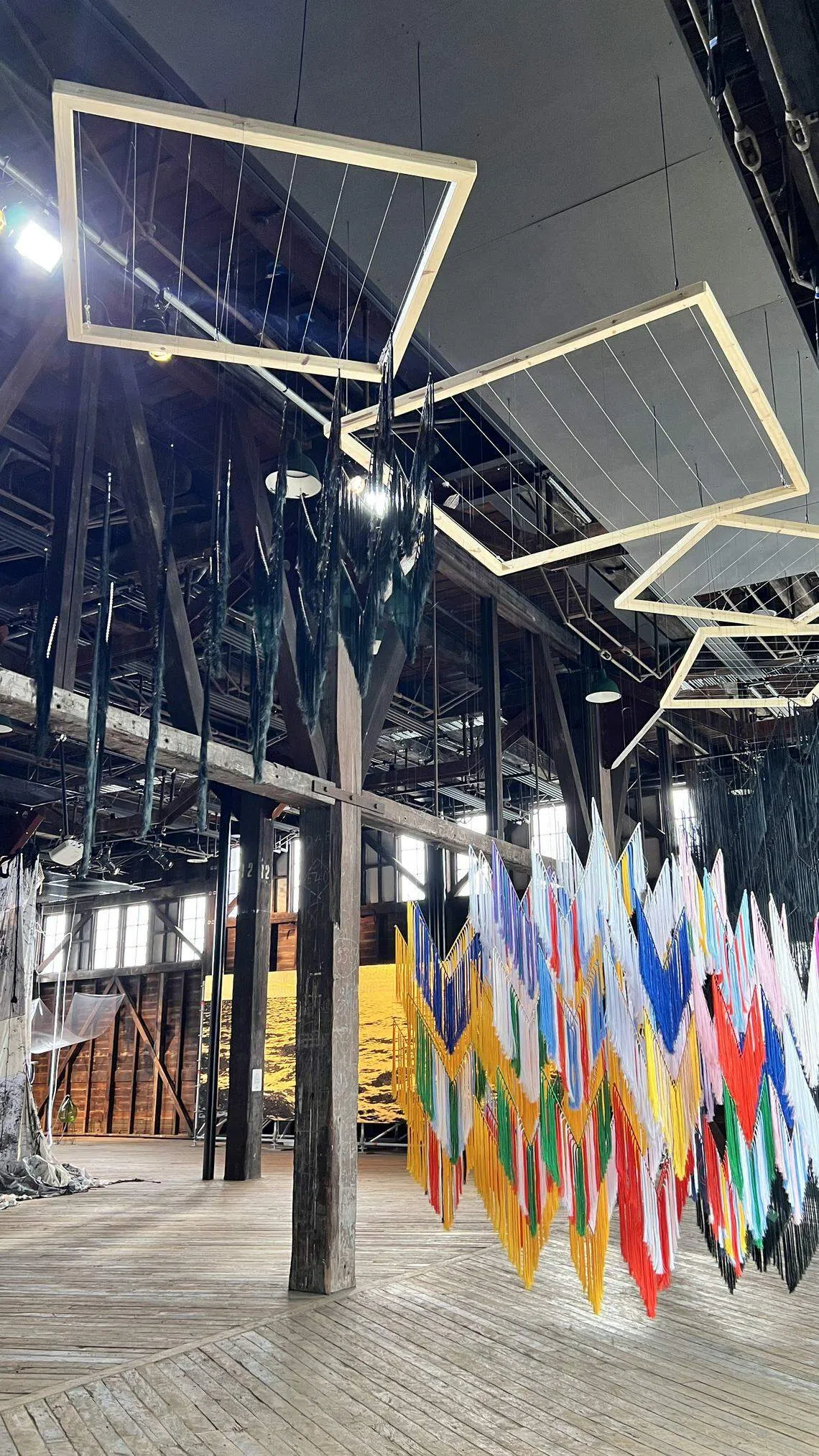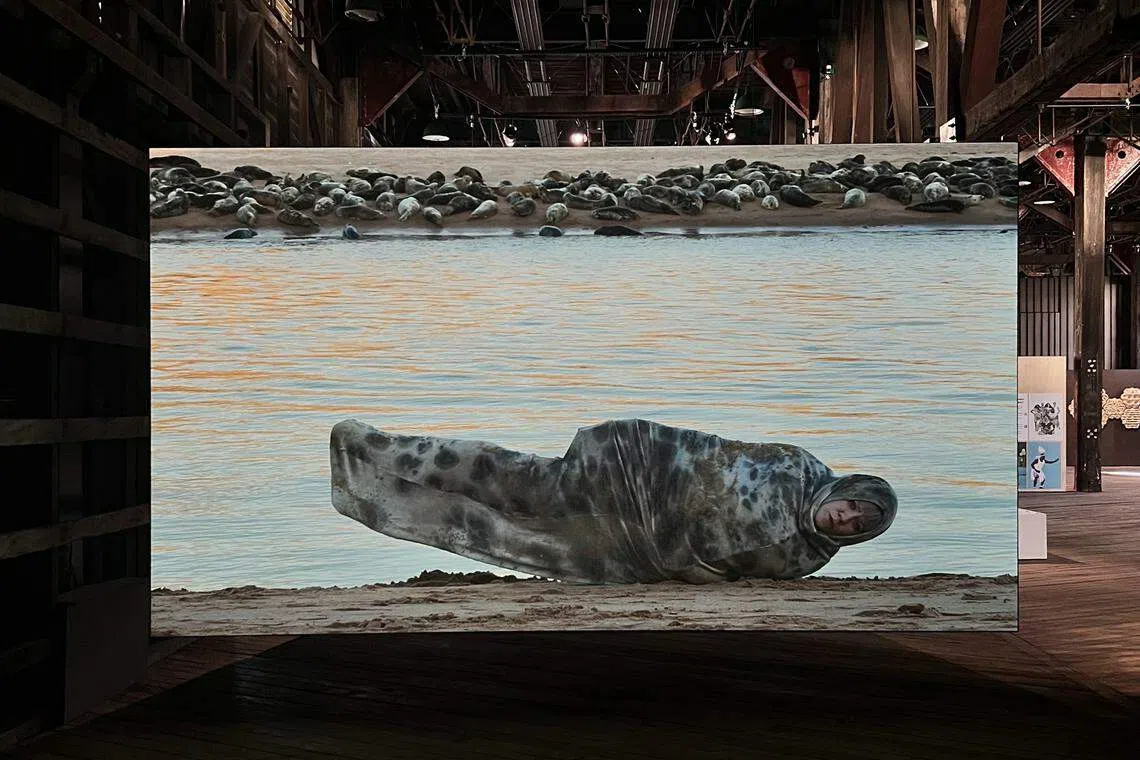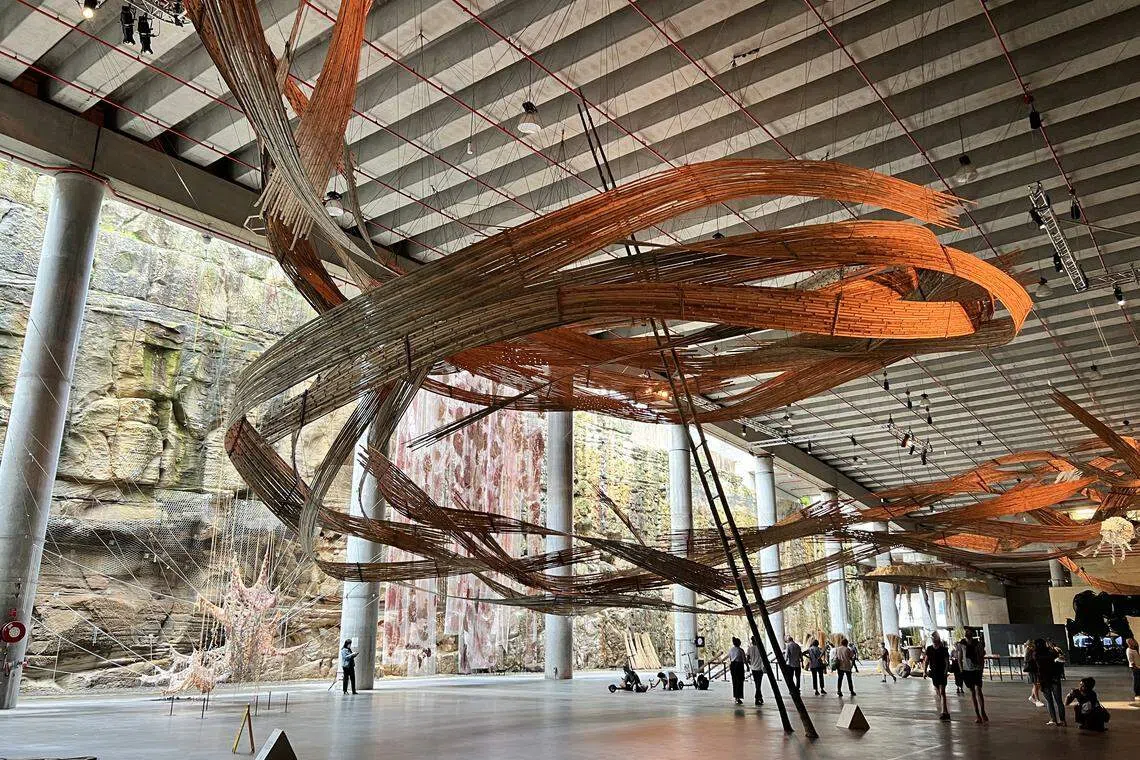Sydney Biennale: A rivus runs through it
Sydney’s biggest art event explores our relationship with streams, rivers, wetlands and ancestral landscapes

Helmi Yusof
CAN a river be a person? The Sydney Biennale certainly thinks so: It’s listed various rivers around the world (such as the Baaka River and Atrato River) alongside international artists as “participants” of the major art event.
Rivers are the main inspiration for this biennale whose title is rivus, the Latin word for “stream” – but also an anagram for “virus”, that pesky little thing that brought the world to its knees not long ago.
For these reasons and more, the 23rd Sydney Biennale looks unlike any other biennale this writer has ever seen: It is gritty, raw, crude, organic and earthy, shorn of the usual shimmer and colour that accompany these events.

Artistic director Jose Roca was determined to create a sustainable biennale that not only addresses human responsibility to the environment, but also uses non-polluting materials and production processes. This may well be the international biennale with the lowest carbon footprint in recent history.
Several artworks were made from natural materials such as cotton, flowers, algae, leaves and wood: UK duo Ackroyd & Harvey created portraits of people using grass. Germany’s Diana Scherer threaded fabric from grassroots. Israel’s Gal Weinstein built a floor installation using delicious-smelling coffee grounds.

American artist Kiki Smith – one of the event’s few marquee names – created beautiful large-scale tapestries addressing the impact of climate change on the natural world. As with the previous Sydney Biennale, First Nations artists are given the spotlight, creating works inspired by their ancestral traditions and landscapes.
In one of the most peculiar works, Finnish-English artist Hanna Tuulikki showed a film in which she squeezes herself into a one-piece seal costume and tries to communicate with the hundreds of seals hauled out on the estuary banks of Scotland, singing songs that sound like a cross between Christian hymns and the braying of seals.

At first, it appears comical. But it soon turns touching and tender, a reminder that all humans should forge stronger bonds with the natural world. The work pays tribute to Scottish folklore, which believes in “selkies” or hybrid seal-human creatures.
In some ways, Tuulikki’s works encompasses a lot of what the Sydney Biennale is trying to do – reconnect us with the environment and the past.
Waterside locations
Artistic director Roca trained as an architect and worked as an exhibition designer before becoming a curator. The 6 sites of the biennale are visually well-connected, even though they’re scattered across the city. One makes the sometimes long trek from one site to another, only to feel as if one just left the previous one minutes ago.
The 6 sites are the Cutaway, Pier 2/3, Museum of Contemporary Art, National Art School, Art Gallery of New South Wales and Parramatta. (If pressed for time, skip the latter 2 – the first 4 have the most works.)
Roca took inspiration from global cases of rivers being recognised as persons with legal rights: In Colombia where he lives, the Atrato River was granted legal rights in 2016; in New Zealand, the Whanganui River received legal personhood in 2017. These court rulings allow activists and lawyers to fight the exploitation of rivers by unethical parties.

Working with a team of Australia-based curators, Roca found a couple of stunning locations next to glittering bodies of water. The 2 must-visit sites are the Cutaway and Pier 2/3. The Cutaway is a cavernous below-ground space scooped out from under a hill, while Pier 2/3 is a warehouse suspended over the waters of Sydney Harbour.
At the Cutaway, Australia design studio Cave Urban – comprising artists, architects and sculptors – created a large bamboo installation that swirls and snakes across the ceiling like a winding river. Filipino artist Leeroy New complements that vision with a flotilla of fantastical boats that look like sea creatures, all made out of recycled plastics, bicycle wheel frames, ribbons and other found objects.

While at the Cutaway, you mustn’t miss a large installation on the beautiful Stargazer Lawn, located 2 floors above the main exhibition space. Here, sound artists Bernie Krause and United Visual Artists recorded animal sounds across the world. African owls, the Canada goose and the humpback whale are just some of the creatures whose wails and cries instantly immerse you in the wondrous wilderness of nature.
Meanwhile at Pier 2/3, which overlooks the waters of Sydney Harbour, several works benefit from the gorgeous vista. Cuban artist Yuan Capote has a stunning wall work that looks like a gold-and-black painting of the sea, though it is actually made from gold leaf and fish hooks. Finnish artist Outi Pieski drew from Sami craft traditions for her beautiful thread tapestries. The Torres Strait 8, which took the Australian government to the Human Rights Committee of the United Nations over its inaction on climate change, created an installation out of its protest material.

To appreciate this edition of the Sydney Biennale, one needs to discard all expectations of what biennales should look like. The show appears rough on the surface, given the widespread use of natural and unprocessed materials – but it offers a vision of a sustainable future of art and artmaking, one that deeply respects the earth we inhabit.
Where to stay
Pier One Sydney Harbour is a boutique hotel located under the Sydney Harbour Bridge and next to Pier 2/3, one of the Biennale exhibition sites. It is also within walking distance to 2 other Biennale sites, the Museum of Contemporary Art and the Cutaway. The hotel offers chic federation-style furnishings and a spectacular view of the waterfront. The location is close to markets, restaurants, historical sites and the Circular Quay metro station.

The writer’s trip was supported by Tourism Australia and Pier One Sydney Harbour.
Decoding Asia newsletter: your guide to navigating Asia in a new global order. Sign up here to get Decoding Asia newsletter. Delivered to your inbox. Free.
Copyright SPH Media. All rights reserved.

